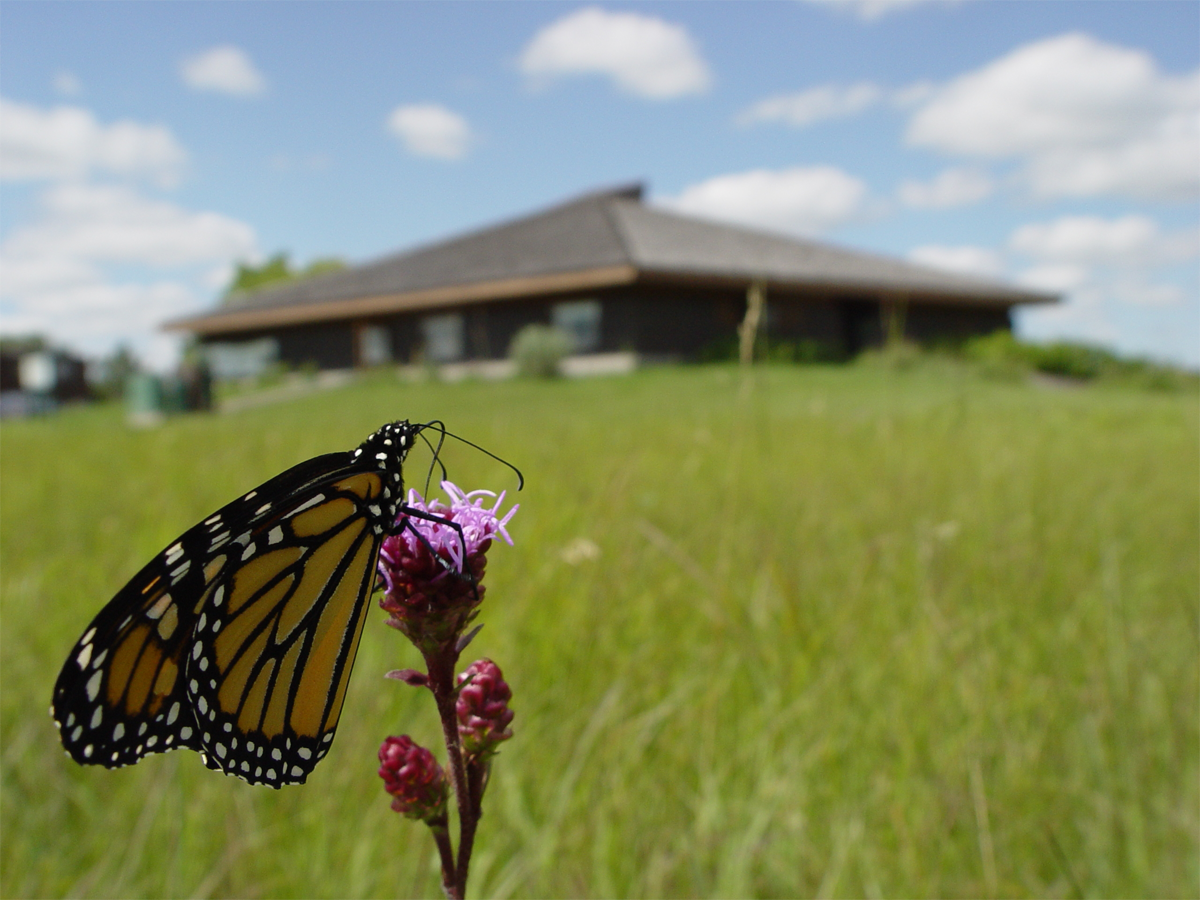Welcome to Living Prairie Museum
Living Prairie Museum is a unique urban nature preserve that protects endangered tall grass prairie. The site has walking trails and an interpretive centre. Events and education programs are held year-round.
About Tall Grass Prairie
Prior to European settlement, tall grass prairie covered more than 1 million square kilometers in central North America, stretching from Texas to southern Manitoba. Today, this habitat is all but gone - only 1 percent of the original tall grass prairie remains. The Living Prairie Museum is one of the few remaining fragments of this once vast ecosystem.
The Living Prairie Museum has 13 hectares of tall-grass prairie. Set aside in 1968, the preserve is home to more than 150 different grass and wildflower species and an array of prairie wildlife.
Upcoming Events
17th Annual Monarch Butterfly Festival
Join us on Saturday, July 26 and Sunday, July 27 from 10 a.m. to 3 p.m.
The Monarch Butterfly Festival celebrates our butterfly friends with activities and fun. The event is great for the whole family, and admission is free.
Enjoy live butterfly displays, and our milkweed plant giveaway. Experience the prairie by taking a guided hike, and take part in hands-on crafts and activities. Prairie Flora plant sale will be back to help you start your own butterfly garden. There will also be displays and activities from several partners, so you can learn more about butterflies and prairie in Manitoba.
For more information on this event, or to volunteer, please contact the Living Prairie Museum.
Family Theme Days
Thursdays 10 a.m. - 11:30 p.m, July 17 – August 21
FREE Activities for families with kids ages 5-12.
Registration and adult supervision required.
Registration will open:
- For Friends of the Living Prairie Museum members: July 2
- For general public: July 9 for the July dates, and July 28 for the August dates.
Call 204-832-0167 or email prairie@winnipeg.ca to register.
July 17 – Marvelous Microbes
July 24 – Who Grows There – Beginner flower ID
July 31 – Storms on the Prairies
August 7 – Flower Art and Science
August 14 – Eager Beavers
August 21 - Bison
Free Summer Guided Walks
July – 11 a.m. every Friday, and 11 a.m. on Saturday July 5 and Saturday July 19
August – Dates to come
Visit the tall grass prairie with a Living Prairie Museum naturalist! Explore the sights, smells, and sounds of the prairie. Get up close with the grasses, flowers, and animals that live here. Learn about what makes this place so special, and how you can help continue our prairie legacy.
Walks are about 1 hour long on flat wood-chipped trails and suitable for all ages. No registration required.
Visiting Living Prairie Museum
Self-Guided Trails
Our self-guided trails are open everyday. The trail system is an opportunity to see and learn about some of the most endangered habitat in the world.
Trails are woodchipped and are of various widths.
Please stay on the designated paths during your visit. This is an on-leash park – please clean up after your pets.
The Self-guided Trail Booklet is also available at the Museum.
Interpretive Centre Hours
May and June – Saturdays, 10:00 a.m. to 5:00 p.m.
July and August – Tuesday-Sunday, 10:00 a.m. to 5:00 p.m.
September – Saturdays, 10:00 a.m. to 5:00 p.m.
October to April – Open by Appointment. Contact us at 204-832-0167 or prairie@winnipeg.ca
Prairie Bookstore and Seed Sales
Living Prairie Museum's Bookstore has many great books about nature and the prairies. We also sell seeds for many tall-grass prairie plants. Seeds are $3/package. Visit us during Interpretive Centre hours or make an appointment. View our current Book and Seed Inventory.
Living Prairie Museum Medicine Garden
As part of our commitment to reconciliation, a medicine garden has been planted in collaboration with the Living Prairie Museum, Indigenous Relations Division, and a local Indigenous Elder. The garden features sage and sweetgrass, two of the four Sacred Medicines which naturally occur in the tall grass prairie.
The medicine garden is located in the nature park west of the preserve at the north end of Prairie View Road at Ness Avenue. It can be harvested by the public during the summer, but care and attention are needed to maintain the garden. Only harvest what is needed, taking only the leaves and leaving roots and seeds to allow the plants to regenerate between harvests.
It is good practice to consult with an Elder to learn more on the harvest and use of sacred medicines.
More information on the Directional Teachings and the Four Sacred Medicines, as shared by Elder Carolyn Moar.
Environmental Education Programs and Group Bookings
Living Prairie Museum offers a variety of in-person environmental education programs. Programs are available for schools and groups ages 5 to adult. Each program includes an interactive presentation and an outdoor adventure. Curriculum links are available for most of our programs. We also offer snowshoeing and Nature Comes to You programming in winter.
2024-25 Environmental Education brochure
More information
- Activity Booklet for Kids - Learn about prairie wildlife and how you can become a citizen scientist
- For more information regarding history, videos, and herbarium visit: livingprairie.org
- To become a Friend of the Living Prairie Museum visit: Friends of the Living Prairie Museum
- For a walk through the prairie past, including historical photography visit virtualmuseum.ca
Location and contact information
The Interpretive Centre is located at:
2795 Ness Avenue
Winnipeg, Manitoba R3J 3S4
Phone: 204-832-0167
Email: prairie@winnipeg.ca
Fax: 311
Living Prairie Museum can be reached by car, by active transportation on the Yellow Ribbon Greenway, and on the the #D15 and 220 bus routes.
Contact us for accessibility information for building, trails, and programs.

